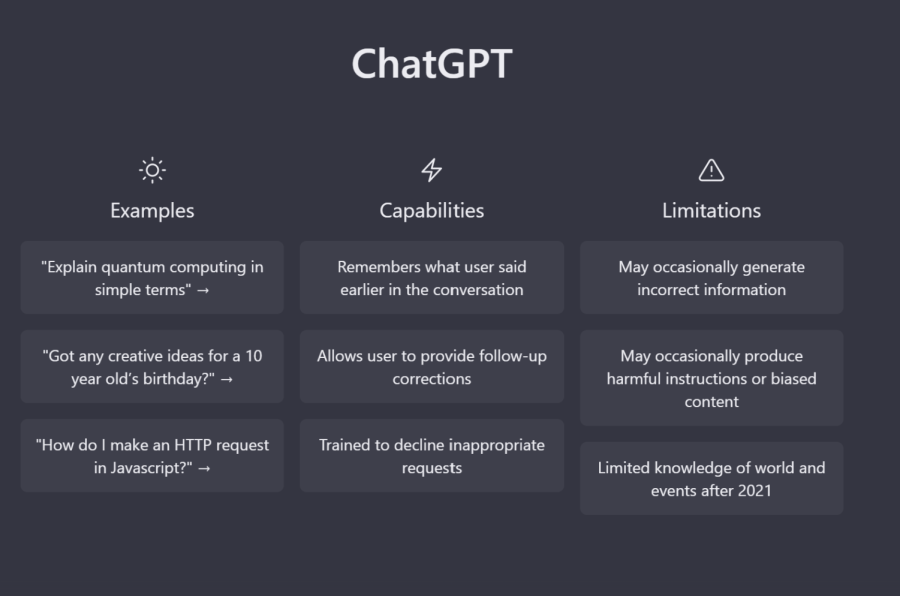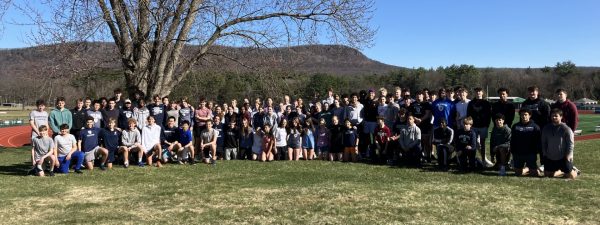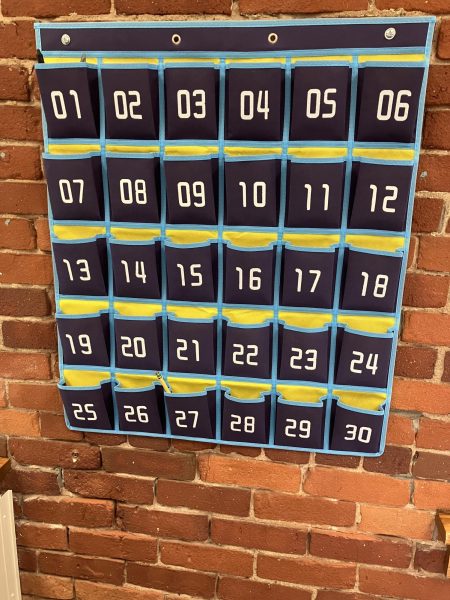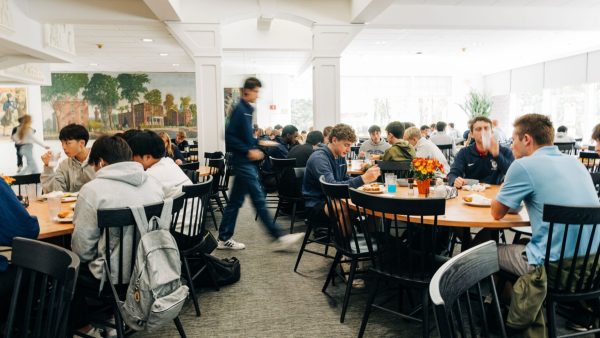ChatGPT: A Threat and an Opportunity
In recent months, ChatGPT, an artificial intelligence (AI) chat service, has taken academia by storm, and teachers and professors worldwide are beginning to see some of the ramifications the new technology could have on the teaching profession.
ChatGPT is a free internet service that provides an AI-generated response to any question or request within seconds.
Williston currently uses Turnitin to check for student plagiarism, however, when Turnitin and other similar programs check these AI responses for dishonest activity, there is not even a whiff.
Since its public release in November 2022, ChatGPT has generated a diversity of perspectives, from excitement to outright fear. Williston student Jaxon “Ziggy” Zemachson believes ChatGPT and AI to be an important tool.
“The fact that I can put in a prompt for a college essay or essay in general and have it produce something that is sometimes better than my own writing makes me believe this is future,” Ziggy said. “Schools, like Williston, should start teaching students to use ChatGPT to serve the betterment of their own education.”
While AI generated writing is currently undetectable, ChatGPT makes a well-articulated argument. After typing the question, “How will AI increase the risk of plagiarism?” ChatGPT developed this response:
“It is not accurate to say that all AI writing is not traceable to previous writings. AI models are trained on large datasets of text, which can include a variety of sources such as books, articles, and websites. The AI model learns to predict the next word in a sequence based on the words that came before it, and it can generate new text by sampling from the distribution of words it has learned. However, the AI model does not have its own personal experiences or original thoughts, and it is not capable of creating entirely new ideas or concepts on its own. As a result, the text generated by AI models may be similar to or influenced by texts that the model has seen during training.”
As displayed above, not only does this AI program generate uncopied work, but it can produce eloquent and often sophisticated writing. With this, one cannot help but ponder the question: how will this transform education and integrity within schools?
In fact, the website poses such a threat to academic integrity that there have been efforts to ban it completely.
According to Vice, “New York City’s education department has banned access to ChatGPT… the ban will apply to devices and internet networks belonging to the education department.” The article explained that individual schools could request access to ChatGPT to study artificial intelligence.
While New York City’s education department is clearly taking drastic steps to prevent student use, the development of AI-proofing technology is already in the works.
Edward Tian, a senior studying computer science at Princeton, has developed an app that can detect essays written by ChatGPT. The Insider reported that Tian used his new app, GPTZero, to analyze a New Yorker article and a letter written by ChatGPT.
“It correctly identified that they were respectively written by a human and AI,” the article reported.
GPTZero, according to its website, went viral on Twitter on Jan. 3, 2023, with more than seven million views.
With an accomplished background in education, Williston’s Head of School, Robert W. Hill, wonders how AI will transform academia.
“It’s entirely true that every generation has learned to accept, adapt, and advance with technology,” Hill said. “My professional life has run in tandem with the advent of the PC, to the laptop, to the smartphone and instant access to all information. AI on the one hand seems to take its place in this line of development; however, it also might represent a true boundary moment, akin to genetic engineering, or weaponization of viruses from a basement laboratory. The trouble with the argument: ‘let’s wait and see and analyze what the effect is on humans,’ [is that it] might not work in the hypersonic speed of technological advances. It’s not like a slow lava flow.”










